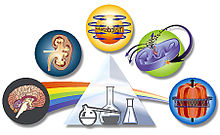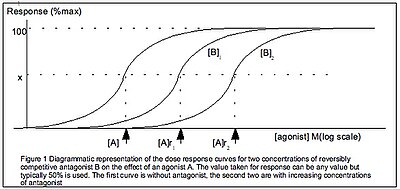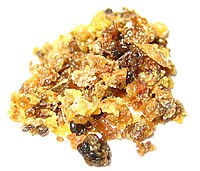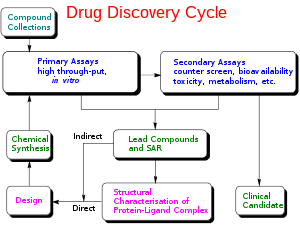Cantore Artithmetic is able to pi at three point one for one in infinite as pi2 that examples the ability of Cantore arithmetic in word!
Stanislaw Szukalski is the hold to Cantore Arithmetic as the base line to the all prepared 3.141 semblance and will best serve the idea to what is the probable in the King James Version of Big Pharma!!!!
Pastor Doug Batchelor in the Golden Compass would have The Bat as the tremble to why fear should not inhabit the thought of being in dignity. As for the bottom line to Big Pharma the template must go to Pastor Doug Batchelor’s belief in teaching vegetarianism.
The basis to his deck is drugs in the good book recipe included to the most deep physics that regained the fathom to only four inches for the measurement of The horse:
Consider the logos of Britannica as The Thistle is of importance to the message of the good book and may carry carriage to a better harness for the thorn. In residence the basis to what is a hand is the imperative now and the message is not mine to enhance as the teaching belongs to the bellow as the chamber is Doug Batchelor comma Pastor out of Sacramento comma California!
This is a Lot of information at piers of measurement for the horse is in aspect milking weed to ground the gravity outside the Egyptian belief and without cortex would have been outside the European depth: Period, VERY SERIOUS.
To balance this information as this is not knowledge this is teaching is the responsibility of the taught and since nobody is responding to the most recent email to Channel Four Local News in San Francisco, California, and, since the city is preparation for a global meeting at the Moscone Center this information will continue to be averaged and that is theft at the tree of knowledge in the good book kjv.
Oddly comma the basis for Cantore Arithmetic was to bring to The Christian the depth of the tell at a situation where my situation was not reliant, and, the people whom brought their bore to my ear in just heard what they had said are in representation of a Global Conference that is held in the city as that incident bringing the fact to what was said originally to fruition now.
Interesting the intersection that delivered more than four corners as earth or eyes of brine.
Pharmacology
| Pharmacology | |
|---|---|
 Diagrammatic representation of organ bath used for studying the effect of isolated tissues | |
| MeSH Unique ID | D010600 |
Pharmacology is a science of medical drug and medication,[1] including a substance's origin, composition, pharmacokinetics, therapeutic use, and toxicology. More specifically, it is the study of the interactions that occur between a living organism and chemicals that affect normal or abnormal biochemical function.[2] If substances have medicinal properties, they are considered pharmaceuticals.
The field encompasses drug composition and properties, functions, sources, synthesis and drug design, molecular and cellular mechanisms, organ/systems mechanisms, signal transduction/cellular communication, molecular diagnostics, interactions, chemical biology, therapy, and medical applications and antipathogenic capabilities. The two main areas of pharmacology are pharmacodynamics and pharmacokinetics. Pharmacodynamics studies the effects of a drug on biological systems, and pharmacokinetics studies the effects of biological systems on a drug. In broad terms, pharmacodynamics discusses the chemicals with biological receptors, and pharmacokinetics discusses the absorption, distribution, metabolism, and excretion(ADME) of chemicals from the biological systems.
Pharmacology is not synonymous with pharmacy and the two terms are frequently confused. Pharmacology, a biomedical science, deals with the research, discovery, and characterization of chemicals which show biological effects and the elucidation of cellular and organismal function in relation to these chemicals. In contrast, pharmacy, a health services profession, is concerned with the application of the principles learned from pharmacology in its clinical settings; whether it be in a dispensing or clinical care role. In either field, the primary contrast between the two is their distinctions between direct-patient care, pharmacy practice, and the science-oriented research field, driven by pharmacology.
Etymology[edit]
The word pharmacology is derived from Greek φάρμακον, pharmakon, "drug, poison" and -λογία, -logia "study of", "knowledge of"[3][4] (cf. the etymology of pharmacy). Pharmakon is related to pharmakos, the ritualistic sacrifice or exile of a human scapegoat or victim in Ancient Greek religion.
The modern term pharmacon is used more broadly than the term drug because it includes endogenous substances, and biologically active substances which are not used as drugs. Typically it includes pharmacological agonists and antagonists, but also enzyme inhibitors (such as monoamine oxidaseinhibitors).[5]
History[edit]
The origins of clinical pharmacology date back to the Middle Ages, with pharmacognosy and Avicenna's The Canon of Medicine, Peter of Spain's Commentary on Isaac, and John of St Amand's Commentary on the Antedotary of Nicholas.[9] Early pharmacology focused on herbalism and natural substances, mainly plant extracts. Medicines were compiled in books called pharmacopoeias. Crude drugs have been used since prehistory as a preparation of substances from natural sources. However, the active ingredient of crude drugs are not purified and the substance is adulterated with other substances.
Traditional medicine varies between cultures and may be specific to a particular culture, such as in traditional Chinese, Mongolian, Tibetan and Korean medicine. However much of this has since been regarded as pseudoscience. Pharmacological substances known as entheogens may have spiritual and religious use and historical context.
In the 17th century, the English physician Nicholas Culpeper translated and used pharmacological texts. Culpeper detailed plants and the conditions they could treat. In the 18th century, much of clinical pharmacology was established by the work of William Withering.[10] Pharmacology as a scientific discipline did not further advance until the mid-19th century amid the great biomedical resurgence of that period.[11] Before the second half of the nineteenth century, the remarkable potency and specificity of the actions of drugs such as morphine, quinine and digitalis were explained vaguely and with reference to extraordinary chemical powers and affinities to certain organs or tissues.[12]The first pharmacology department was set up by Rudolf Buchheim in 1847, at University of Tartu, in recognition of the need to understand how therapeutic drugs and poisons produced their effects.[11] Subsequently, the first pharmacology department in England was set up in 1905 at University College London.
Pharmacology developed in the 19th century as a biomedical science that applied the principles of scientific experimentation to therapeutic contexts.[13] The advancement of research techniques propelled pharmacological research and understanding. The development of the organ bath preparation, where tissue samples are connected to recording devices, such as a myograph, and physiological responses are recorded after drug application, allowed analysis of drugs' effects on tissues. The development of the ligand binding assay in 1945 allowed quantification of the binding affinity of drugs at chemical targets.[14] Modern pharmacologists use techniques from genetics, molecular biology, biochemistry, and other advanced tools to transform information about molecular mechanisms and targets into therapies directed against disease, defects or pathogens, and create methods for preventive care, diagnostics, and ultimately personalized medicine.
Divisions[edit]
The discipline of pharmacology can be divided into many sub disciplines each with a specific focus.
Systems of the body[edit]

Pharmacology can also focus on specific systems comprising the body. Divisions related to bodily systems study the effects of drugs in different systems of the body. These include neuropharmacology, in the central and peripheral nervous systems; immunopharmacology in the immune system. Other divisions include cardiovascular, renal and endocrine pharmacology. Psychopharmacology is the study of the use of drugs that affect the psyche, mind and behavior (e.g. antidepressants) in treating mental disorders (e.g. depression).[15][16] It incorporates approaches and techniques from neuropharmacology, animal behavior and behavioral neuroscience, and is interested in the behavioral and neurobiological mechanisms of action of psychoactive drugs.[citation needed] The related field of neuropsychopharmacology focuses on the effects of drugs at the overlap between the nervous system and the psyche.
Pharmacometabolomics, also known as pharmacometabonomics, is a field which stems from metabolomics, the quantification and analysis of metabolites produced by the body.[17][18] It refers to the direct measurement of metabolites in an individual's bodily fluids, in order to predict or evaluate the metabolism of pharmaceuticalcompounds, and to better understand the pharmacokinetic profile of a drug.[17][18] Pharmacometabolomics can be applied to measure metabolite levels following the administration of a drug, in order to monitor the effects of the drug on metabolic pathways. Pharmacomicrobiomics studies the effect of microbiome variations on drug disposition, action, and toxicity.[19] Pharmacomicrobiomics is concerned with the interaction between drugs and the gut microbiome. Pharmacogenomics is the application of genomic technologies to drug discovery and further characterization of drugs related to an organism's entire genome.[citation needed] For pharmacology regarding individual genes, pharmacogenetics studies how genetic variation gives rise to differing responses to drugs.[citation needed] Pharmacoepigenetics studies the underlying epigenetic marking patterns that lead to variation in an individual's response to medical treatment.[20]
Clinical practice and drug discovery[edit]

Pharmacology can be applied within clinical sciences. Clinical pharmacology is the application of pharmacological methods and principles in the study of drugs in humans.[21] An example of this is posology, which is the study of how medicines are dosed.[22]
Pharmacology is closely related to toxicology. Both pharmacology and toxicology are scientific disciplines that focus on understanding the properties and actions of chemicals.[23] However, pharmacology emphasizes the therapeutic effects of chemicals, usually drugs or compounds that could become drugs, whereas toxicology is the study of chemical's adverse effects and risk assessment.[23]
Pharmacological knowledge is used to advise pharmacotherapy in medicine and pharmacy.
Drug discovery[edit]
This article may contain an excessive amount of intricate detail that may interest only a particular audience. (July 2019) |
Drug discovery is the field of study concerned with creating new drugs. It encompasses the subfields of drug design and development.[24] Drug discovery starts with drug design, which is the inventive process of finding new drugs.[25] In the most basic sense, this involves the design of molecules that are complementary in shape and charge to a given biomolecular target.[26] After a lead compound has been identified through drug discovery, drug development involves bringing the drug to the market.[24] Drug discovery is related to pharmacoeconomics, which is the sub-discipline of health economicsthat considers the value of drugs[27][28] Pharmacoeconomics evaluates the cost and benefits of drugs in order to guide optimal healthcare resource allocation.[29] The techniques used for the discovery, formulation, manufacturing and quality control of drugs discovery is studied by pharmaceutical engineering, a branch of engineering.[30] Safety pharmacology specialises in detecting and investigating potential undesirable effects of drugs.[31]
Development of medication is a vital concern to medicine, but also has strong economical and political implications. To protect the consumer and prevent abuse, many governments regulate the manufacture, sale, and administration of medication. In the United States, the main body that regulates pharmaceuticals is the Food and Drug Administration; they enforce standards set by the United States Pharmacopoeia. In the European Union, the main body that regulates pharmaceuticals is the EMA, and they enforce standards set by the European Pharmacopoeia.
The metabolic stability and the reactivity of a library of candidate drug compounds have to be assessed for drug metabolism and toxicological studies. Many methods have been proposed for quantitative predictions in drug metabolism; one example of a recent computational method is SPORCalc.[32] A slight alteration to the chemical structure of a medicinal compound could alter its medicinal properties, depending on how the alteration relates to the structure of the substrate or receptor site on which it acts: this is called the structural activity relationship (SAR). When a useful activity has been identified, chemists will make many similar compounds called analogues, to try to maximize the desired medicinal effect(s). This can take anywhere from a few years to a decade or more, and is very expensive.[33] One must also determine how safe the medicine is to consume, its stability in the human body and the best form for delivery to the desired organ system, such as tablet or aerosol. After extensive testing, which can take up to six years, the new medicine is ready for marketing and selling.[33]
Because of these long timescales, and because out of every 5000 potential new medicines typically only one will ever reach the open market, this is an expensive way of doing things, often costing over 1 billion dollars. To recoup this outlay pharmaceutical companies may do a number of things:[33]
- Carefully research the demand for their potential new product before spending an outlay of company funds.[33]
- Obtain a patent on the new medicine preventing other companies from producing that medicine for a certain allocation of time.[33]
The inverse benefit law describes the relationship between a drugs therapeutic benefits and its marketing.
When designing drugs, the placebo effect must be considered to assess the drug's true therapeutic value.
Drug development uses techniques from medicinal chemistry to chemically design drugs. This overlaps with the biological approach of finding targets and physiological effects.
Wider contexts[edit]
Pharmacology can be studied in relation to wider contexts than the physiology of individuals. For example, pharmacoepidemiology concerns the variations of the effects of drugs in or between populations, it is the bridge between clinical pharmacology and epidemiology.[34][35] Pharmacoenvironmentology or environmental pharmacology is the study of the effects of used pharmaceuticals and personal care products (PPCPs) on the environment after their elimination from the body.[36] Human health and ecology are intimately related so environmental pharmacology studies the environmental effect of drugs and pharmaceuticals and personal care products in the environment.[37]
Drugs may also have ethnocultural importance, so ethnopharmacology studies the ethnic and cultural aspects of pharmacology.[38]
Emerging fields[edit]
Photopharmacology is an emerging approach in medicine in which drugs are activated and deactivated with light. The energy of light is used to change for shape and chemical properties of the drug, resulting in different biological activity.[39] This is done to ultimately achieve control when and where drugs are active in a reversible manner, to prevent side effects and pollution of drugs into the environment.[40][41]
Theory of pharmacology[edit]

The study of chemicals requires intimate knowledge of the biological system affected. With the knowledge of cell biology and biochemistry increasing, the field of pharmacology has also changed substantially. It has become possible, through molecular analysis of receptors, to design chemicals that act on specific cellular signaling or metabolic pathways by affecting sites directly on cell-surface receptors (which modulate and mediate cellular signaling pathways controlling cellular function).
Chemicals can have pharmacologically relevant properties and effects. Pharmacokinetics describes the effect of the body on the chemical (e.g. half-life and volume of distribution), and pharmacodynamics describes the chemical's effect on the body (desired or toxic).
Systems, receptors and ligands[edit]

Pharmacology is typically studied with respect to particular systems, for example endogenous neurotransmitter systems. The major systems studied in pharmacology can be categorised by their ligands and include acetylcholine, adrenaline, glutamate, GABA, dopamine, histamine, serotonin, cannabinoid and opioid.
Molecular targets in pharmacology include receptors, enzymes and membrane transport proteins. Enzymes can be targeted with enzyme inhibitors. Receptors are typically categorised based on structure and function. Major receptor types studied in pharmacology include G protein coupled receptors, ligand gated ion channels and receptor tyrosine kinases.
Network pharmacology is a subfield of pharmacology that combines principles from pharmacology, systems biology, and network analysis to study the complex interactions between drugs and targets (e.g., receptors or enzymes etc.) in biological systems. The topology of a biochemical reaction network determines the shape of drug dose-response curve[42] as well as the type of drug-drug interactions,[43] thus can help designing efficient and safe therapeutic strategies. The topology Network pharmacology utilizes computational tools and network analysis algorithms to identify drug targets, predict drug-drug interactions, elucidate signaling pathways, and explore the polypharmacology of drugs.
Pharmacodynamics[edit]
Pharmacodynamics is defined as how the body reacts to the drugs. Pharmacology models include the Hill equation, Cheng-Prusoff equation and Schild regression. Pharmacodynamics theory often investigates the binding affinity of ligands to their receptors.
Medication is said to have a narrow or wide therapeutic index, certain safety factor or therapeutic window. This describes the ratio of desired effect to toxic effect. A compound with a narrow therapeutic index (close to one) exerts its desired effect at a dose close to its toxic dose. A compound with a wide therapeutic index (greater than five) exerts its desired effect at a dose substantially below its toxic dose. Those with a narrow margin are more difficult to dose and administer, and may require therapeutic drug monitoring (examples are warfarin, some antiepileptics, aminoglycoside antibiotics). Most anti-cancer drugs have a narrow therapeutic margin: toxic side-effects are almost always encountered at doses used to kill tumors.
The effect of drugs can be described with Loewe additivity which is one of several common reference models.[43]
Pharmacokinetics[edit]
This section has multiple issues. Please help improve it or discuss these issues on the talk page. (Learn how and when to remove these template messages)
|


.jpg)












No comments:
Post a Comment